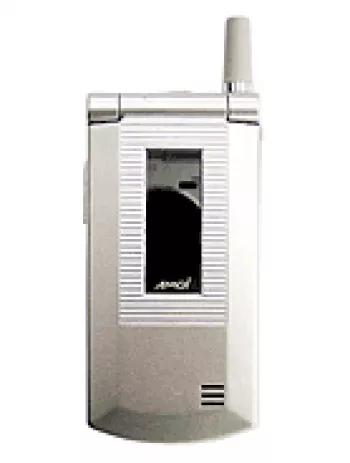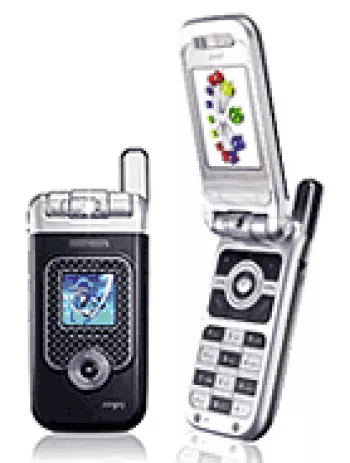
Design and Build Quality
The Amoi F99b features a compact and minimalist design, reflecting traditional cell phone aesthetics from the early 2000s. With dimensions of 86 x 49 x 24 mm and a weight of just 80 grams, it is incredibly portable and easy to handle, fitting comfortably in the palm of a hand or a pocket. The device uses a Mini-SIM card, standard for mobile phones during its time. Its build emphasizes durability, designed for everyday use without the risk of easy damage.
Display
This feature phone is equipped with a CSTN display, capable of showing up to 65K colors. While not particularly remarkable by today's standards, it was suitable for basic functions such as viewing messages, simple graphics, and interface navigation. The display has a resolution of 128 x 128 pixels, presenting adequate clarity for essential functions without consuming excessive battery power.
Network and Connectivity
The Amoi F99b operates on GSM technology, supporting 2G bands at GSM 900, 1800, and 1900 frequencies. It is important to note that it features GPRS for basic mobile data transfer but lacks EDGE support. Connectivity options are very limited, as the phone does not support Bluetooth, WLAN, or GPS. Additionally, traditional connectivity features like USB are notably absent, aligning with the basic functionality of feature phones of its era.
Battery Life
One of the strong suits of the Amoi F99b is its battery life. Powered by a removable Li-Ion 860 mAh battery, it offers a standby time of up to 100 hours and a talk time of up to 3 hours. This extended battery performance is largely due to the phone's efficient power usage, limited by its basic functionality and lack of power-hungry applications.
Memory and Storage
The device includes a phonebook capable of storing up to 500 contacts, which was a generous capacity at the time. However, it offers no card slot for expandable storage, meaning users are limited to the internal memory for storing contacts and call records. Call log storage supports up to 10 dialed, received, and missed calls each.
Sound and Alerts
Sound options on the Amoi F99b include polyphonic ringtones with the capability of playing 40 tones. Sadly, it lacks a loudspeaker and a 3.5mm headphone jack, making it less versatile for audio playback compared to more advanced media-centric phones of today. Alert types are limited to vibration and the polyphonic ringtones.
Features and Functionalities
The feature set of the Amoi F99b is representative of basic mobile functionality. It supports SMS, EMS, MMS, and Email for communication, along with a WAP browser for modest internet browsing. Entertainment options include 5 preloaded games, but the phone does not support Java applications. The absence of sensor-based features and modern app support marks its primary use as a communication tool.
Launch and Market Position
Announced and launched in 2003, the Amoi F99b has since been discontinued. At the time of its release, it was positioned as an accessible phone for users needing fundamental mobile communication capabilities without the complexity and cost of more advanced smartphones.
Conclusion
The Amoi F99b stands as a testament to early mobile phone technology, prioritizing simplicity and functionality. Its design and feature set cater to users seeking straightforward communication tools. While it may not boast the advanced features of modern smartphones, it exemplifies an era where reliability and ease of use were paramount. This device now serves as a historical piece showcasing the evolution of mobile technology.
Key Features of Amoi F99b
- Compact and lightweight with dimensions of 86 x 49 x 24 mm and weight of 80 g.
- GSM technology supporting 2G bands: GSM 900 / 1800 / 1900.
- Color display with CSTN, 65K colors and a resolution of 128 x 128 pixels.
- Phonebook capacity for up to 500 contacts.
- Messaging options include SMS, EMS, MMS, and Email.
- Equipped with five built-in games.
- Provides WAP browser support.
- Removable Li-Ion 860 mAh battery with up to 100 hours of standby time and up to 3 hours of talk time.
- Released in 2003, although it is now discontinued.
Disadvantages of Amoi F99b
- Only supports GSM network; no 3G or 4G capabilities.
- No EDGE support; limited to GPRS for data connectivity.
- Discontinued model; announced in 2003 and no longer available.
- Lacks a camera feature.
- No expandable memory card slot; limited memory capacity.
- No loudspeaker functionality.
- Does not have a standard 3.5mm headphone jack.
- Does not support modern communication options like WLAN, Bluetooth, or Radio.
- Limited browsing capabilities with only WAP browser support.
- Battery offers limited talk time of up to 3 hours and stand-by time up to 100 hours only.

View Also
More Phones
All Rights Reserved +13676 Phones © Mobilawy 2025
























